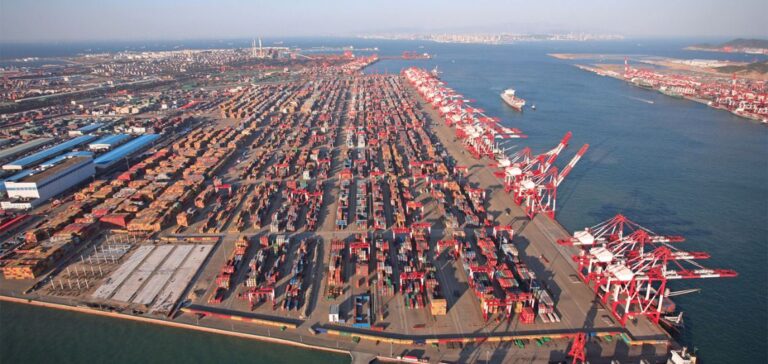The local government announced on its website that construction of the Jiangsu Huadian Ganyu LNG terminal has begun at Ganyu Port in Lianyungang, east China’s Jiangsu Province. The operation is planned for 2026. The terminal has a designed LNG receiving capacity of 3 million tons per year and is part of the national natural gas development plan and the province’s 14th five-year plan, the local government said.
One of the four projects approved by the central government in 2022
Jiangsu Huadian Ganyu LNG terminal is one of the four LNG receiving projects approved by the central government in 2022, which have a maximum combined LNG receiving capacity of about 24 million tons per year. The other three projects are Guangdong Energy’s Huizhou LNG terminal with a capacity of 6.1 million tons per year, Hanas Energy’s Putian LNG terminal with a capacity of 5.65 million tons per year and Urban Rural Energy’s Yingkou LNG terminal with a capacity of 6.2 million tons per year.
Huadian Jiangsu Energy, BP and three other shareholders jointly develop Jiangsu Huadian Ganyu LNG terminal
Jiangsu Huadian Ganyu LNG terminal, which is jointly developed by Huadian Jiangsu Energy, BP Gas & Power Investments and three other shareholders, has obtained construction approval from the National Development and Reform Commission, one of the country’s top economic planners, in June 2022.
Construction of the project was originally scheduled to begin in the second half of 2022, but was reportedly delayed due to the resurgence of COVID-19 in the country, according to market sources.
An LNG terminal including a quay, storage tanks and a pipeline
The project includes the construction of a wharf, storage tanks and a pipeline that connects to the regional natural gas distribution network and will have an annual LNG receiving capacity of 3 million tons, or 4.2 billion cubic meters, according to the Lianyungang government.
The total planned construction period is 33 months and the dock will include a new 150,000-ton LNG dock capable of accommodating industry-leading 217,000 cubic meters of LNG carriers, the local government said.
China Huadian Group Corp. is one of the five largest state-owned power companies in China. The Jiangsu Huadian Ganyu LNG terminal is Huadian Group’s first LNG terminal project and BP’s second in China. BP first participated in a Chinese LNG terminal project in 2006 with a 30% stake in the 7 million ton per year Guangdong Dapeng terminal. Located in Shenzhen, Guangdong Province, this LNG import and regasification terminal was the first in China and began operations in September 2006.
Increasing direct investment by Chinese power companies
China Huadian Group is one of China’s five largest state-owned power generation companies, and its investment in this LNG terminal marks a growing direct involvement of power companies in LNG supply and infrastructure, rather than going through domestic oil companies to procure fuel.
Jiangsu province currently has three LNG terminals: PetroChina’s 6.5 million ton per year Rudong terminal, Guanghui’s 5 million ton per year Qidong terminal, and CNOOC’s 6 million ton per year Binhai terminal. In addition, the Jiangsu provincial government and state-owned Zhenhua Oil are building a 2.95 million ton per year LNG terminal in the port of Yangkou, which is expected to begin operations in late 2024.
Despite negative natural gas demand growth in China due to high prices in 2022, the central government should continue to support the country’s long-term natural gas demand growth to meet its energy transition goals. According to NDRC data released in early February, natural gas consumption in China reached 366.3 billion cubic meters in 2022, down 1.7% from 2021.






















